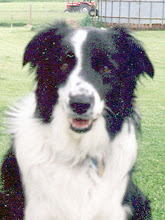When the snow and wind gusts hit, the sheep parked themselves in the barn area and refused to venture to the pasture where the almost-spring grass awaited.
The Haflinger horses, though, cantered to the hay field and grazed while the wind gusted.
I pondered the scene.
Both the sheep and horses are built to handle cold. The Katahdin sheep were developed in Maine, while the Haflingers originated in the mountains of northern Italy and Austria.
All animals are in good flesh -- a polite way of saying they're carrying a protective layer of fat.
When the winds died down and the temperatures remained in the teens, the sheep moseyed to the pasture and I had my answer to what was keeping the sheep at the barn. It was the gusting wind.
Sheep have little defenses against predators. They're not particularly fast, so they can't outrun a coyote or dog. While flight is out, their fight defenses aren't that great either.
When sheep graze, they are always listening and watching for danger. Wind, though, hinders this. So, when the wind blows, the sheep opt for safety.
My little piggy Haflingers, though, are confident in their ability to run from danger. So they turn their butts to the wind and graze, graze, graze.
Subscribe to:
Post Comments (Atom)













No comments:
Post a Comment